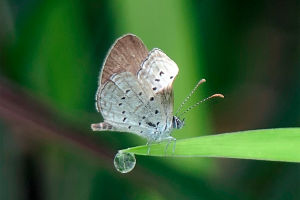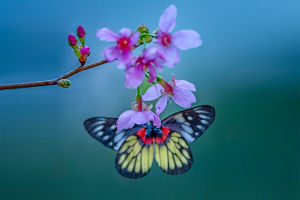Clownfish are often admired for their vibrant colors and charismatic personalities, but their life cycle is just as fascinating as their appearance.
From the moment a clownfish egg is laid to when it becomes an adult gliding through coral reefs, every stage of its journey is marked by remarkable transformations and critical survival strategies!
The Egg Stage: A Tiny Beginning
The life of a clownfish starts as a tiny egg, usually laid on a flat surface near a sea anemone, which will later provide protection and shelter. Clownfish are known for their unique reproductive behavior. The female lays hundreds of eggs, often within the safety of the sea anemone’s tentacles. The male clownfish then fertilizes them and takes on the role of protecting the eggs. He vigorously guards them from predators and keeps them oxygenated by fluttering his fins over them.
The eggs are orange in color, matching the clownfish's vibrant hue, and can be clearly seen as they develop. Over the course of about six to seven days, the eggs undergo a fascinating transformation, with the larvae slowly developing into tiny clownfish.
The Larvae Stage: Drifting in the Ocean
Once the clownfish eggs hatch, the larvae are released into the ocean, where they will begin a remarkable journey. These larvae are microscopic, drifting in the open water, carried by ocean currents. For about 10 days, the clownfish larvae remain in the planktonic phase, relying on the ocean’s currents for movement and nutrition.
During this stage, the tiny clownfish are highly vulnerable to predators. However, the larvae possess a remarkable instinct to seek out anemones, which offer them shelter and protection from the dangers of the open ocean. As the larvae mature, they begin to develop the distinctive orange color and black stripes that will define their adult appearance.
The Settlement Stage: A Home Found
After surviving the planktonic stage, the clownfish larvae eventually find a suitable sea anemone to call home. This marks the beginning of their juvenile stage. This transition is critical for the young clownfish, as they must form a mutualistic relationship with the sea anemone, a process that provides them with shelter and protection from predators.
In return, the clownfish help clean the anemone by removing parasites and debris. Additionally, the clownfish’s movements and waste products provide nutrients to the anemone, creating a mutually beneficial relationship. It’s this partnership that will serve as the foundation of the clownfish’s life moving forward.
The Adult Stage: A Vibrant Reef Resident
As the clownfish matures, it adopts a more permanent residence within its sea anemone host. The adult clownfish becomes highly territorial, defending its anemone against intruders. The colors of the clownfish become more vibrant, and it becomes more confident in its movements.
The clownfish's body is adapted to living among the venomous tentacles of the sea anemone, thanks to a special layer of mucus that prevents the sting from affecting them. This adaptation is essential for their survival in an environment that is otherwise dangerous for most other species. As adults, clownfish continue their symbiotic relationship with the anemone, and their role in the ecosystem as both predator and prey becomes increasingly important.
Reproduction and the Next Generation
Clownfish reach maturity at around one year of age. In a group, there is typically a dominant female and a mate, with smaller males filling supporting roles. If the dominant female is removed, the male will transition into the female role, and a new male will take her place.
When it’s time to reproduce, the female will lay her eggs, and the cycle begins again. The male continues to care for the eggs, ensuring their survival. This repetitive cycle ensures the ongoing survival of clownfish populations, as each new generation adapts to the ever-changing dynamics of the coral reef ecosystem.
From their humble beginnings as tiny eggs to their vibrant adulthood, clownfish have a life cycle that is both fascinating and vital to the health of coral reef ecosystems. Their unique relationship with sea anemones highlights nature’s ability to create symbiotic bonds that support the survival of both species.
By protecting these tiny ocean stars and their habitats, we ensure the continuation of this remarkable journey for future generations of clownfish. The life cycle of a clownfish is a testament to the resilience of nature and the importance of each stage in the intricate web of ocean life!
The Amazing Life Cycle Of A Clownfish | The Dodo
Video by The Dodo


